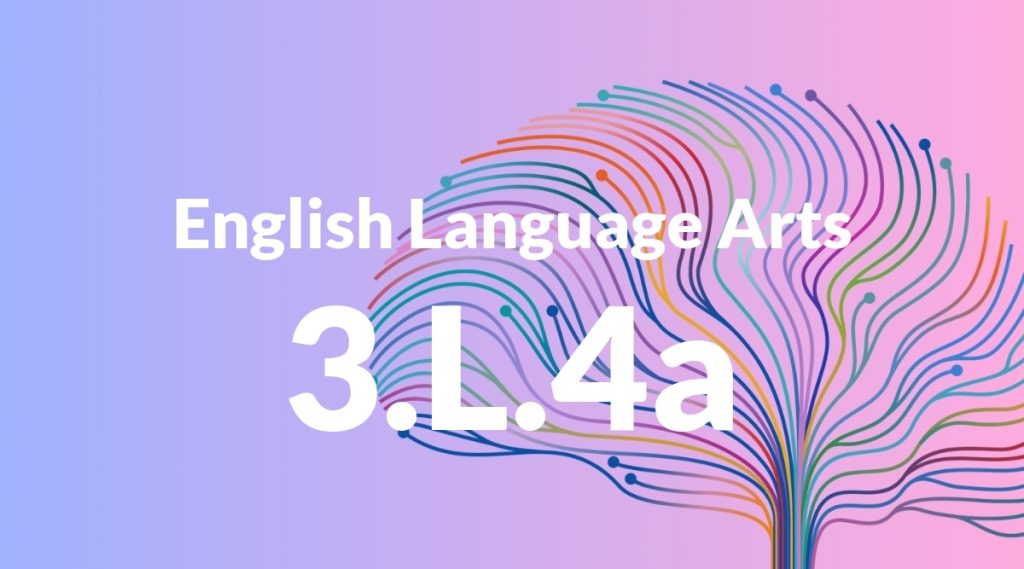Standard: 3.L.4 – Determine or clarify the meaning of unknown and multiple-meaning words and phrases based on grade 3 reading and content, choosing flexibly from a range of strategies.
Grade level: Grade 3
Subject: English Language Arts
Domain: Language
Teacher Overview
This standard focuses on helping students determine or clarify the meaning of unknown and multiple-meaning words and phrases. This is important for developing reading comprehension and vocabulary skills, which are essential for understanding and enjoying texts. By learning to use a range of strategies, students become more flexible and independent readers. Students should already understand basic reading comprehension and be able to use context clues, dictionaries, and basic word analysis (root words, prefixes, and suffixes).
After mastering this standard, students will be able to independently determine the meanings of unknown words and phrases, enhancing their reading comprehension and preparing them for more complex language tasks.
Common Misconception 1
A common misconception is that words have only one meaning. This is incorrect because many words in English have multiple meanings depending on the context in which they are used.
Intervention 1
To remediate this misconception, provide students with practice sentences using words with multiple meanings. Discuss how the meaning changes with different contexts and encourage students to use context clues to determine the correct meaning.
Common Misconception 2
Another misconception is that dictionary definitions are always the best way to understand a word. This is incorrect because context often provides the most relevant clues to a word’s meaning.
Intervention 2
Encourage students to use context clues first before confirming meanings with a dictionary. Provide guided practice with examples where context clues clearly indicate the word’s meaning.
Prerequisite Knowledge
Students should be familiar with basic reading comprehension skills and have a basic understanding of context clues. They should also know how to use a simple dictionary and have a basic understanding of root words, prefixes, and suffixes.
Subsequent Knowledge
After mastering this standard, students will be able to apply advanced vocabulary strategies in more complex texts. They will also improve their reading comprehension and be better prepared for higher-level language arts skills, such as analyzing word choice and its impact on meaning and tone.
Instructional Activities
- Context Clues Practice: Provide sentences with unknown words and have students use context clues to determine the meanings.
- Dictionary Skills: Teach students how to effectively use a dictionary to find word meanings.
- Multiple Meanings: Create activities where students identify different meanings of the same word in various sentences.
- Word Analysis: Practice breaking down words into root words, prefixes, and suffixes to determine meanings.




